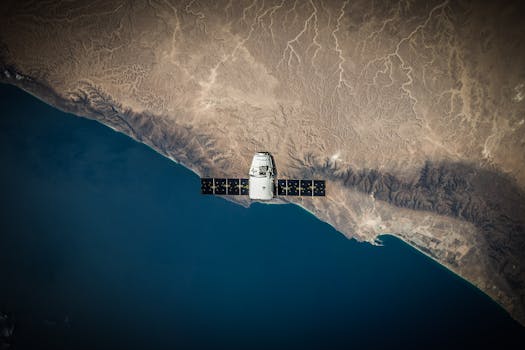
MEO Satellites: Introduction to Medium Earth Orbit Technology
MEO satellites, or Medium Earth Orbit satellites, are a type of satellite that operates in an orbit between 2,000 and 36,000 kilometers above the Earth’s surface. This orbit is higher than Low Earth Orbit (LEO) satellites but lower than Geostationary Orbit (GEO) satellites. MEO satellites are designed to provide a unique combination of benefits, including global coverage, high-speed data transfer, and low latency.
At the beginning of MEO satellites research, it is crucial to understand the history and development of satellite technology. The first MEO satellite was launched in the 1990s, and since then, the technology has evolved significantly. Today, MEO satellites are used for a variety of applications, including navigation, communication, and Earth observation.
Benefits and Applications of MEO Satellites
MEO satellites offer several benefits that make them an attractive option for various industries. One of the primary advantages of MEO satellites is their ability to provide global coverage. Because they operate in a higher orbit than LEO satellites, MEO satellites can cover a larger area of the Earth’s surface, making them ideal for applications such as navigation and communication.
Another benefit of MEO satellites is their high-speed data transfer capability. MEO satellites can transfer data at speeds of up to 10 Gbps, making them suitable for applications that require high-bandwidth connectivity, such as video streaming and online gaming. Additionally, MEO satellites have lower latency compared to GEO satellites, which makes them more responsive and interactive.
MEO satellites are also used for Earth observation applications, such as weather forecasting, climate monitoring, and disaster response. They can provide high-resolution images of the Earth’s surface, which can be used to track changes in the environment, monitor natural disasters, and predict weather patterns.
Challenges and Limitations of MEO Satellites
While MEO satellites offer several benefits, they also face some challenges and limitations. One of the primary challenges of MEO satellites is their high cost. Launching a satellite into MEO is a complex and expensive process, which can make it difficult for some organizations to access this technology.
Another limitation of MEO satellites is their limited payload capacity. Because MEO satellites operate in a higher orbit, they require more power and propulsion to maintain their position and communicate with Earth. This can limit the amount of payload they can carry, which can restrict their functionality and application.
Future of MEO Satellites
Despite the challenges and limitations, the future of MEO satellites looks promising. With advancements in technology and reductions in cost, MEO satellites are becoming more accessible and affordable for a wider range of organizations. Additionally, the increasing demand for global connectivity and high-speed data transfer is driving the growth of the MEO satellite market.
Several companies, such as Amazon and SpaceX, are investing heavily in MEO satellite technology, with plans to launch thousands of satellites into MEO in the coming years. These constellations of satellites will provide global coverage, high-speed data transfer, and low latency, enabling a wide range of applications, from communication and navigation to Earth observation and remote sensing.
